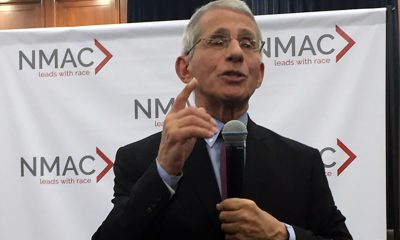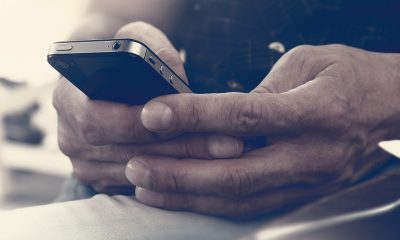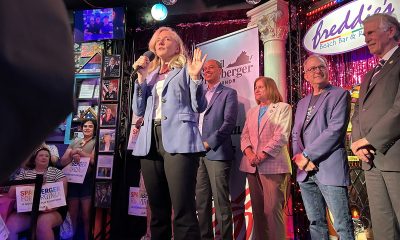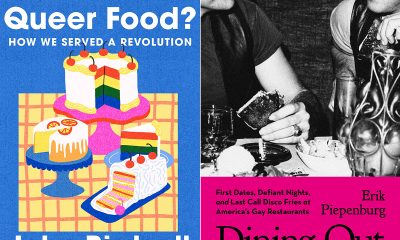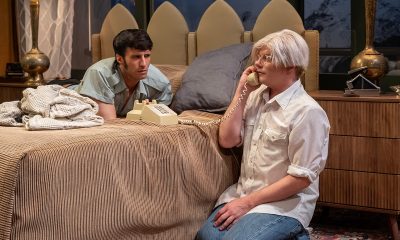Books
More books for your COVID downtime
From history to LGBTQ studies, something for all tastes
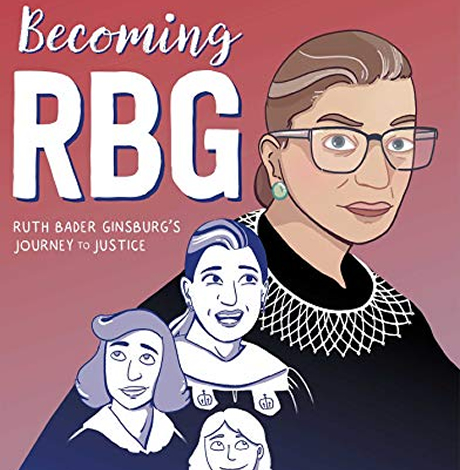
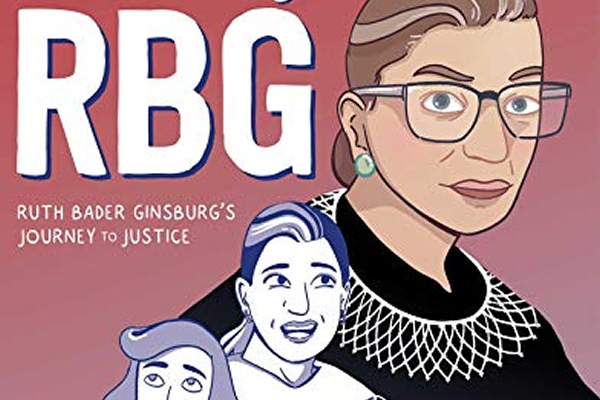
This is part three of a three-part series spotlighting some of the best books to read while passing time during the COVID-19 quarantine.
HISTORY
If you’re looking for something empowering while you’re stuck at home, try “Mighty Justice: My Life in Civil Rights” by Dovey Johnson Roundtree and Katie McCabe. During the Civil Rights Movement, Roundtree was an attorney who not only helped her clients but also took on a racist system in North Carolina and nationally. Another book to find is “Race Against Time” by Jerry Mitchell. As a reporter, Mitchell opened Civil-Rights-era crimes, and this is his story.
You might not find “The Rise and Fall of Charles Lindbergh” by Candace Fleming in the adult biography section of your library or bookstore. You may find it in the Young Adult section, but that doesn’t mean this book is just for teens. Adults will thrill to the story of Lindburgh, his feats and accomplishments, his life and tragedy, and the beliefs he held that tarnish his legacy today.
Civil War buffs will want “Not Even Past: The Stories We Keep Telling About the Civil War” by Cody Marrs close by. Here, Marrs takes a look at that which has been written and told for generations, and why those tales still matter. Also look for “Hymns of the Republic: The Story of the Final Year of the American Civil War” by S.C. Gwynne. The title is appealing, all on its own.
World War II buffs will thoroughly enjoy reading “Inge’s War” by Svenja O’Donnell. It’s the story of a story that O’Donnell learned as an adult, when she reached out to her grandmother and discovered family secrets, triumphs, and villainy.
Speed demons in need of a little zoom will want to find “Faster” by Neal Bascomb, a book about a race car driver who was the victim of racism; an automaker who was the victim of financial mayhem, and an heiress who dreamed of her youth. Add in a bit of history, Nazi Germany, and a fast-paced story and really, how can you resist?
If you love reading slice-of-life historical tales, then look for “The Jamestown Brides: The Story of England’s ‘Maids for Virginia’” by Jennifer Potter. It’s the true story of the women who left their homes in Great Britain in 1620 to join settlers in Jamestown, Virginia, the hardships they endured, and what it was like to live in America at the country’s very infancy.
LGBTQ STUDIES
OK, so you’re up for something unique now, and you can’t go wrong with “Uncomfortable Labels” by Laura Kate Dale. What makes it different is that Dale is a gay trans woman who is also autistic and this book is about her self-discovery and her life.
Here’s a book for parents, and for transgender readers: “What We Will Become” by Mimi Lemay, a story of a little girl who knew she was a boy, and his mother, an ultra-Orthodox Jew who loved her child enough to give up her old life.
Maybe when this is all over, a bit of poetry is what you’ll need, and “Daddy” by Michael Montlack will be what to look for at the end of this virus’ run. Some of the poems are musings, some are heartfelt, others read a bit like individual paragraphs, all are compelling. You’ll find “Daddy” available in later April.
CHILDREN’S BOOKS
Books are great antidotes to being cooped up for weeks, and “Johnny’s Pheasant” by Cheryl Minnema, illustrated by Julie Flett is a good one to have. It’s the story of an injured bird, a grandma’s love, and a boy with dreams. Another goodie for little readers is “Bedtime for Sweet Creatures” by Nikki Grimes, pictures by Elizabeth Zunon. It’s a tale of goodnight, and it’s perfect for little sleepyheads.
For the middle-grader who worries about the earth, “Bugs in Danger” by Mark Kurlansky, illustrated by Jia Liu is a great find. This book looks at climate change, environmental issues, why the bug population has declined over the past few years, and what we can do to stop it. Another book to find is “Wildlife Adventure” by Coyote Peterson. It’s a book with facts and activities and it might make the time go a little faster.
Little biography lovers will be happy to sit home with Work It, Girl bios, like “Become a Leader Like Michelle Obama” or “Blast Off Into Space Like Mae Jemison,” both by Caroline Moss, illustrated by Sinem Erkas. These books offer a great story, plus learning, plus an update on the lives featured. For the 9-to-13-year-old, a bio couldn’t be better.
The child who loves to people-watch will enjoy reading “Hmong in Wisconsin” by Mai Zong Vue, even when there aren’t a lot of people around. This is a story of immigration, bravery, war, and learning in two different cultures.
The young adult with a growing interest in politics will enjoy “Becoming RBG: Ruth Bader Ginsburg’s Journey to Justice” by Debbie Levy, illustrated by Whitney Gardner. It’s a graphic-novel-style biography on Justice Ginsburg, from her earliest years to her current battles.
A lottery ticket and all that comes with sudden wealth are at the root of “Jackpot” by Nic Stone. When Rico Danger finds a winning ticket and shares with “Zan” Macklin, it seems like every problem either friend has ever had might be over – but money changes things, especially relationships. Another book to look for: the coming-of-age “If Anyone Asks, Say I Died from the Heartbreaking Blues” by Philip Cioffari. It’s the story of an 18-year-old, first love, and doing what’s right.
If the quarantine lasts a while, there’ll be time to read “Kent State: Four Dead in Ohio” by Derf Backderf. It’s a graphic-novel sort of history book about what happened on that horrible day in 1970, but be patient: this book releases on April 7, so look for it.
Books
Two new books on dining out LGBTQ-style
Visit nightclubs, hamburger joints, and a bathhouse that feeds customers
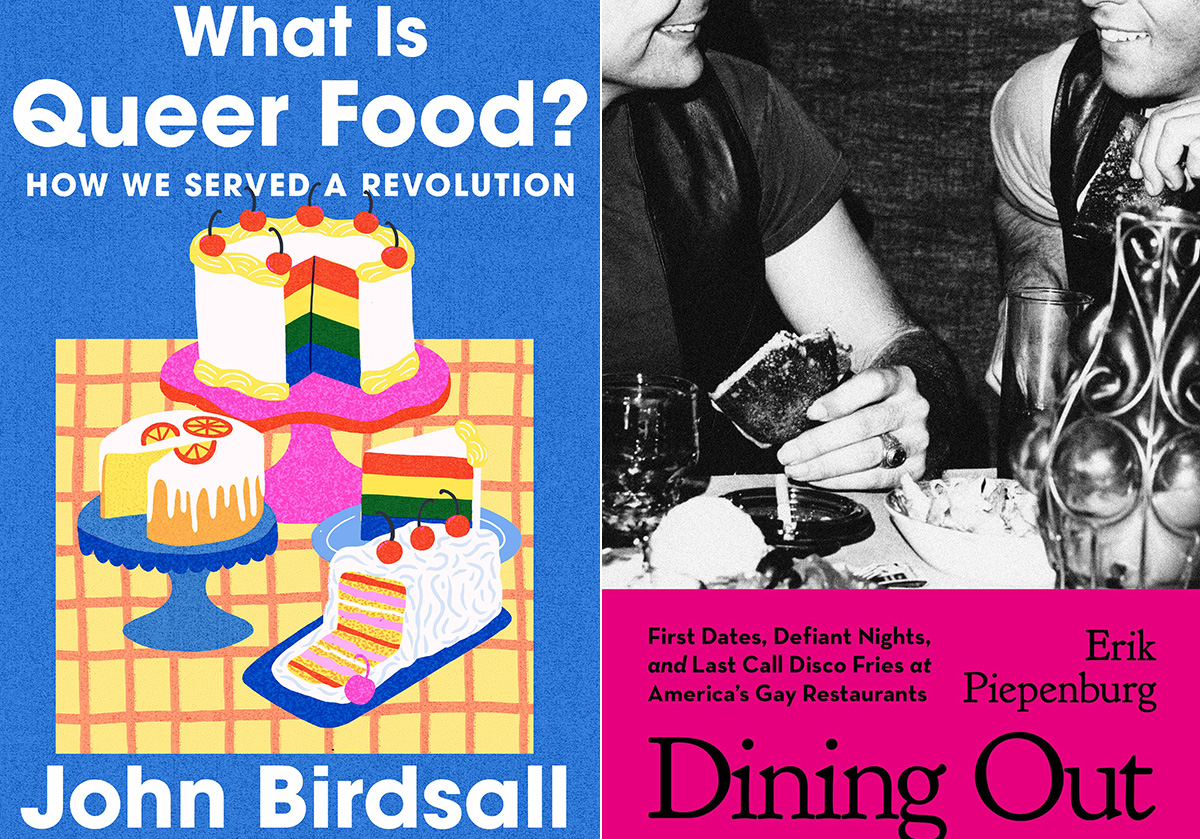
‘What is Queer Food? How We Served a Revolution’
By John Birdsall
c.2025, W.W. Norton
$29.99/304 pages
‘Dining Out: First Dates, Defiant Nights, and Last Call Disco Fries at America’s Gay Restaurants’
By Erik Piepenburg
c.2025, Grand Central
$30/352 pages
You thought a long time about who sits where.
Compatibility is key for a good dinner party, so place cards were the first consideration; you have at least one left-hander on your guest list, and you figured his comfort into your seating chart. You want the conversation to flow, which is music to your ears. And you did a good job but, as you’ll see with these two great books on dining LGBTQ-style, it’s sometimes not who sits where, but whose recipes were used.
When you first pick up “What is Queer Food?” by John Birdsall, you might miss the subtitle: “How We Served a Revolution.” It’s that second part that’s important.

Starting with a basic gay and lesbian history of America, Birdsall shows how influential and (in)famous 20th century queer folk set aside the cruelty and discrimination they received, in order to live their lives. They couldn’t speak about those things, he says, but they “sat down together” and they ate.
That suggested “a queer common purpose,” says Birdsall. “This is how who we are, dahling, This is how we feed our own. This is how we stay alive.”
Readers who love to cook, bake or entertain, collect cookbooks, or use a fork will want this book. Its stories are nicely served, they’re addicting, and they may send you in search of cookbooks you didn’t know existed.
Sometimes, though, you don’t want to be stuck in the kitchen, you want someone else to bring the grub. “Dining Out” by Erik Piepenburg is an often-nostalgic, lively look at LGBTQ-friendly places to grab a meal – both now and in the past.

In his introduction, Piepenburg admits that he’s a journalist, “not a historian or an academic,” which colors this book, but not negatively. Indeed, his journeys to “gay restaurants” – even his generous and wide-ranging definitions of the term – happily influence how he presents his narrative about eateries and other establishments that have fed protesters, nourished budding romances, and offered audacious inclusion.
Here, there are modern tales of drag lunches and lesbian-friendly automats that offered “cheap food” nearly a century ago. You’ll visit nightclubs, hamburger joints, and a bathhouse that feeds customers on holidays. Stepping back, you’ll read about AIDS activism at gay-friendly establishments, and mostly gay neighborhood watering holes. Go underground at a basement bar; keep tripping and meet proprietors, managers, customers and performers. Then take a peek into the future, as Piepenburg sees it.
The locales profiled in “Dining Out” may surprise you because of where they can be found; some of the hot-spots practically beg for a road trip.
After reading this book, you’ll feel welcome at any of them.
If these books don’t shed enough light on queer food, then head to your favorite bookstore or library and ask for help finding more. The booksellers and librarians there will put cookbooks and history books directly in your hands, and they’ll help you find more on the history and culture of the food you eat. Grab them and you’ll agree, they’re pretty tasty reads.
The Blade may receive commissions from qualifying purchases made via this post.
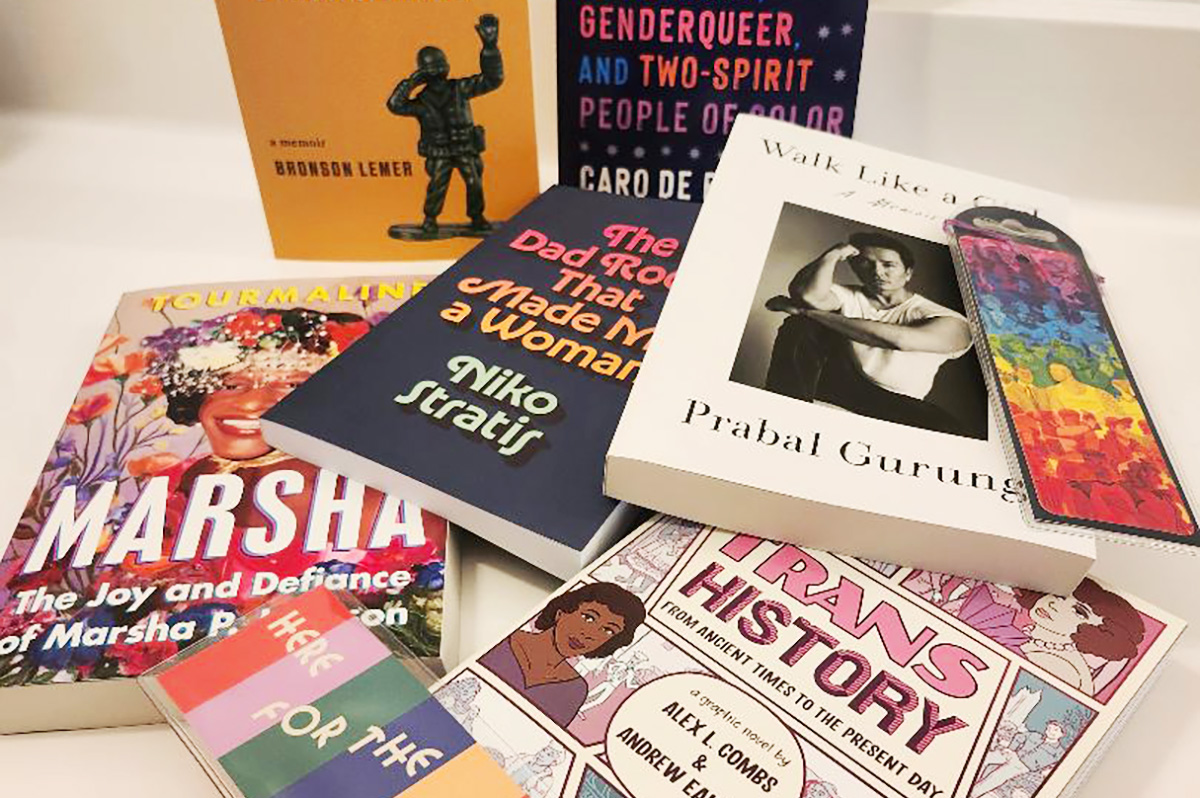
You’re going to be on your feet a lot this month.
Marching in parades, dancing in the streets, standing up for people in your community. But you’re also likely to have some time to rest and reflect – and with these great new books, to read.
First, dip into a biography with “Marsha: The Joy and Defiance of Marsha P. Johnson” by Tourmaline (Tiny Rep Books, $30), a nice look at an icon who, rumor has it, threw the brick that started a revolution. It’s a lively tale about Marsha P. Johnson, her life, her activism before Stonewall and afterward. Reading this interesting and highly researched history is a great way to spend some time during Pride month.
For the reader who can’t live without music, try “The Dad Rock That Made Me a Woman” by Niko Stratis (University of Texas Press, $27.95), the story of being trans, searching for your place in the world, and finding it in a certain comfortable genre of music. Also look for “The Lonely Veteran’s Guide to Companionship” by Bronson Lemer (University of Wisconsin Press, $19.95), a collection of essays that make up a memoir of this and that, of being queer, basic training, teaching overseas, influential books, and life.
If you still have room for one more memoir, try “Walk Like a Girl” by Prabal Gurung (Viking, $32.00). It’s the story of one queer boy’s childhood in India and Nepal, and the intolerance he experienced as a child, which caused him to dream of New York and the life he imagined there. As you can imagine, dreams and reality collided but nonetheless, Gurung stayed, persevered, and eventually became an award-winning fashion designer, highly sought by fashion icons and lovers of haute couture. This is an inspiring tale that you shouldn’t miss.
No Pride celebration is complete without a history book or two.
In “Trans History: From Ancient Times to the Present Day” by Alex L. Combs & Andrew Eakett ($24.99, Candlewick Press), you’ll see that being trans is something that’s as old as humanity. One nice part about this book: it’s in graphic novel form, so it’s lighter to read but still informative. Lastly, try “So Many Stars: An Oral History of Trans, Nonbinary, Genderqueer, and Two-Spirit People of Color” by Caro De Robertis (Algonquin Books of Chapel Hill. $32.00) a collection of thoughts, observations, and truths from over a dozen people who share their stories. As an “oral history,” you’ll be glad to know that each page is full of mini-segments you can dip into anywhere, read from cover to cover, double-back and read again. It’s that kind of book.
And if these six books aren’t enough, if they don’t quite fit what you crave now, be sure to ask your favorite bookseller or librarian for help. There are literally tens of thousands of books that are perfect for Pride month and beyond. They’ll be able to determine what you’re looking for, and they’ll put it directly in your hands. So stand up. March. And then sit and read.
a&e features
James Baldwin bio shows how much of his life is revealed in his work
‘A Love Story’ is first major book on acclaimed author’s life in 30 years
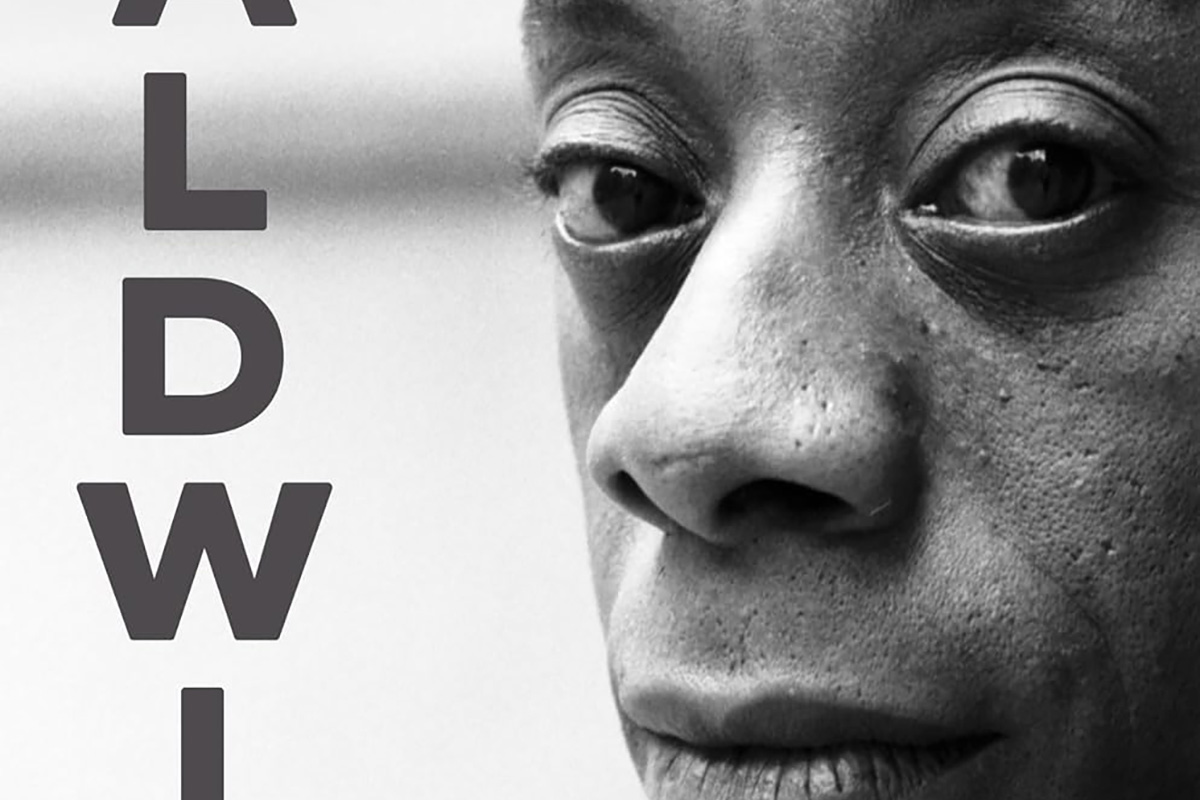
‘Baldwin: A Love Story’
By Nicholas Boggs
c.2025, FSG
$35/704 pages
“Baldwin: A Love Story” is a sympathetic biography, the first major one in 30 years, of acclaimed Black gay writer James Baldwin. Drawing on Baldwin’s fiction, essays, and letters, Nicolas Boggs, a white writer who rediscovered and co-edited a new edition of a long-lost Baldwin book, explores Baldwin’s life and work through focusing on his lovers, mentors, and inspirations.
The book begins with a quick look at Baldwin’s childhood in Harlem, and his difficult relationship with his religious, angry stepfather. Baldwin’s experience with Orilla Miller, a white teacher who encouraged the boy’s writing and took him to plays and movies, even against his father’s wishes, helped shape his life and tempered his feelings toward white people. When Baldwin later joined a church and became a child preacher, though, he felt conflicted between academic success and religious demands, even denouncing Miller at one point. In a fascinating late essay, Baldwin also described his teenage sexual relationship with a mobster, who showed him off in public.
Baldwin’s romantic life was complicated, as he preferred men who were not outwardly gay. Indeed, many would marry women and have children while also involved with Baldwin. Still, they would often remain friends and enabled Baldwin’s work. Lucien Happersberger, who met Baldwin while both were living in Paris, sent him to a Swiss village, where he wrote his first novel, “Go Tell It on the Mountain,” as well as an essay, “Stranger in the Village,” about the oddness of being the first Black person many villagers had ever seen. Baldwin met Turkish actor Engin Cezzar in New York at the Actors’ Studio; Baldwin later spent time in Istanbul with Cezzar and his wife, finishing “Another Country” and directing a controversial play about Turkish prisoners that depicted sexuality and gender.
Baldwin collaborated with French artist Yoran Cazac on a children’s book, which later vanished. Boggs writes of his excitement about coming across this book while a student at Yale and how he later interviewed Cazac and his wife while also republishing the book. Baldwin also had many tumultuous sexual relationships with young men whom he tried to mentor and shape, most of which led to drama and despair.
The book carefully examines Baldwin’s development as a writer. “Go Tell It on the Mountain” draws heavily on his early life, giving subtle signs of the main character John’s sexuality, while “Giovanni’s Room” bravely and openly shows a homosexual relationship, highly controversial at the time. “If Beale Street Could Talk” features a woman as its main character and narrator, the first time Baldwin wrote fully through a woman’s perspective. His essays feel deeply personal, even if they do not reveal everything; Lucian is the unnamed visiting friend in one who the police briefly detained along with Baldwin. He found New York too distracting to write, spending his time there with friends and family or on business. He was close friends with modernist painter Beauford Delaney, also gay, who helped Baldwin see that a Black man could thrive as an artist. Delaney would later move to France, staying near Baldwin’s home.
An epilogue has Boggs writing about encountering Baldwin’s work as one of the few white students in a majority-Black school. It helpfully reminds us that Baldwin connects to all who feel different, no matter their race, sexuality, gender, or class. A well-written, easy-flowing biography, with many excerpts from Baldwin’s writing, it shows how much of his life is revealed in his work. Let’s hope it encourages reading the work, either again or for the first time.
